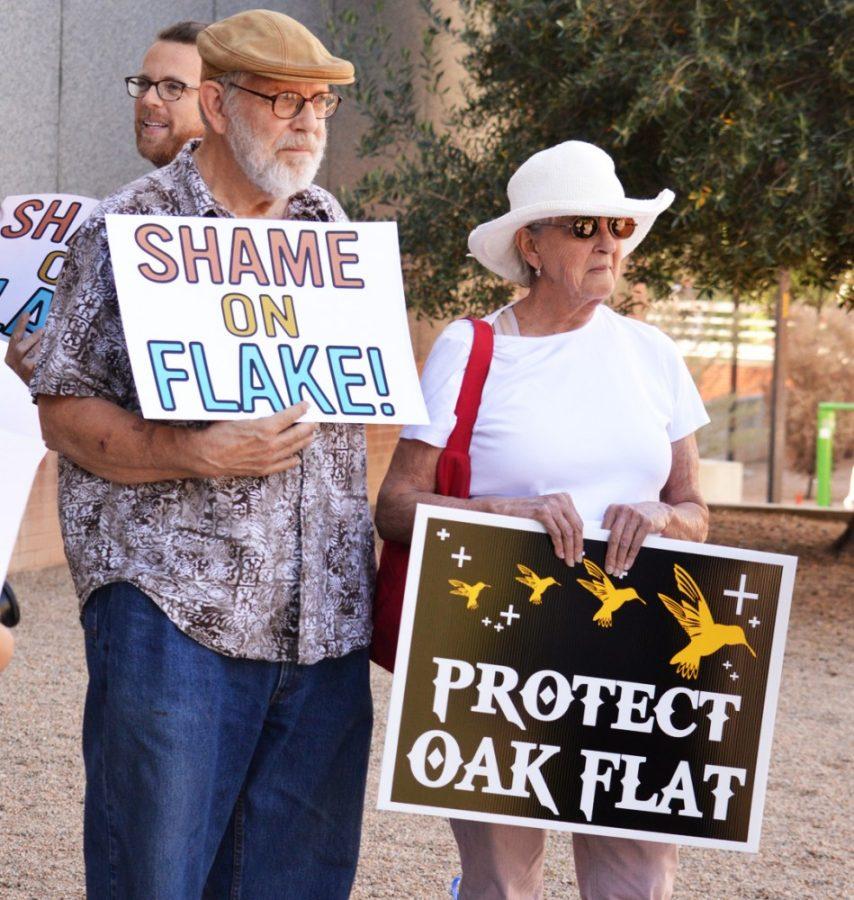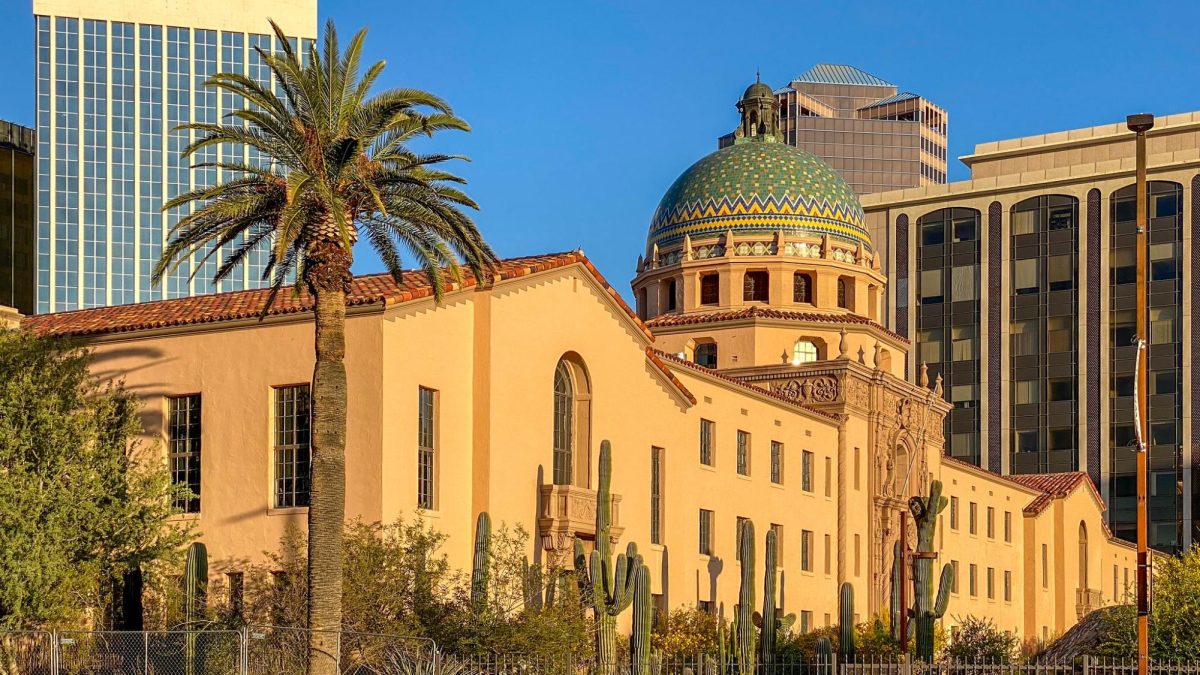Sen. Jeff Flake, UA President Ann Weaver Hart and a panel of water conservation experts planned for Arizona water conservation at the Water Policy Forum on campus on Friday.
“We are told that there’s a good chance that by 2018, we will start to see the shortage declaration along the Colorado River,” Flake said. “It actually could come sooner than that.”
Flake said Arizona is not in crisis right now, but when the state is in long-term drought, it will have to plan.
“The University of Arizona’s faculty has a long-standing and world-leading expertise in water and arid land studies that uniquely positions the University of Arizona to address these supply challenges,” Hart said, “and to help our colleague community forge solutions that will benefit all Arizonans and citizens of the United States and around the world.”
She added that Flake cares deeply about how Arizona manages its water supply and how the policy on supply affects the lives of Arizonans.
“We very much appreciate the senator taking this time out of his incredibly busy schedule and for his focus and leadership on these critical issues,” Hart said.
Marie Pearthree, deputy general manager for the Central Arizona Water Conservation District and strategic initiatives and public policy deputy general manager for the Central Arizona Project, said the Colorado River provides drinking water to about 40 million people and also provides water for a million irrigated acres.
“This is a status of those lakes, as of March 31: Lake Powell is at about 45 percent full and Lake Mead is at 40 percent full,” Pearthree said. “It is really important to note that the reservoir system has been operating the way that it should. We’ve been in drought for 15 years, yet supply shortages have not occurred to date.”
Pearthree also said if Arizona falls into the third level of shortage, when the water levels in Lake Powell and Lake Mead reach 1,025 feet, the cities and the Native American tribes will not be impacted and that primarily agriculture will take the hit.
“When you hit 1,025, you can go down to a 1,000 foot elevation in 12 months,” said Tom Buschatzke, director of Arizona Department of Water Resources appointed by Gov. Doug Ducey. “The significance of a 1,000 foot elevation is this, at that point in time, we’d probably have 9 million acre-feet in Lake Mead and in Lake Powell in total. The use annually is 15 million acre-feet. In 2002, we saw 5 million acre-foot runoff here, that’s 14 million acre-feet. If you repeat that scenario, you’re a million acre-foot short, and you’ve blown through all your storage.”
Alan Forrest, director of Tucson Water, explained Tucson’s progress and where the city is headed in terms of water supplies.
“We’ve made that shift from an all groundwater system to a renewable water supply system,” Forrest said. “A couple things I want to point out: Not only have we made this shift in our supplies, where we’re getting our water from, we’ve also made a huge shift in our demands.”
Forrest said Tucson Water and Metro Water have been working with the city of Phoenix to explore a storage agreement.
“We can store some of the their water here in Tucson, and then during times of shortage, when they’re shorted on the canal up in the Phoenix area, we can recover the water that they’ve stored down here and then make the like amount of water available directly to them off the canal,” Forrest said. “We have a pilot agreement in place; we’re working through that over the next couple of years.”
Jonathan Overpeck, a climate scientist at the UA, asked the panelists and Flake if they are considering the issue of climate change as a major threat to southwestern water supply.
“We are taking that very seriously,” Pearthree said. “We are a member of the Water Utility Climate Alliance, and we have on staff several folks that are engaged very much so in climate modeling and what the current projections are. And we’re taking those scenarios into account in the modeling that we also do. The bureau does modeling, we do modeling and we’re taking a look at climate projections in account in our modeling as well.”
_______________
Follow Brandi Walker on Twitter.









